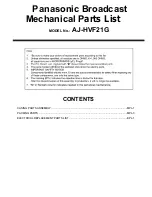
Altai Technologies Ltd. All rights reserved
C1n Series WIFI AP/CPE Web-admin Configuration Manual
TPS15-003_rev1.3
Upon reception of the CTS, the AP then sends the data frame. There are trade-offs
when considering what value you should set for the RTS/CTS threshold. Smaller values
will cause RTS to be sent more often, increasing overheads. However, the more often
RTS packets are sent, the sooner the system can recover from collisions. It is
recommended to use the default value or only minor reductions of this default value.
The value range is from 0 to 2347.
Distance
: Specify the estimate distance of target area (round to the nearest km). C1n
adjusts the round-trip time latency according to this value. The range is from 1 to
50km. The default value is 2km.
IGMP Snooping
: Enable or Disable IGMP snooping; by default, it is enabled. AP is a
Layer 2 device when it is configured as Switch mode. However, IGMP Snooping
implementation on AP is a little bit different than that of standard Layer 2 Switch.
Each Virtual AP (WLAN) port is similar to a Layer 2 switch port. With IGMP Snooping
enabled in the AP, clients associated to a WLAN will only receive multicast packets if
there is at least one client joined the multicast group in that VAP. Unlike ordinary IGMP
Snooping implementation, where Layer 2 switch converts multicast to unicast and
delivers them to devices registered with the multicast group, AP should simply send
out the multicast packets from the WLAN which has at least one client joined the
multicast group. This is done because the wireless media is a broadcast media. It
does not need to be sent multiple times when there are more than one registered
clients.
When IGMP Snooping is turned on, multicast packets should be dropped at the WLAN
exit if there is no client from the VAP who has joined the corresponding multicast
group.
The IGMP snooping forwarding table (port and multicast MAC address mapping table)
should support aging mechanism to age out the entry which has no multicast traffic
for a period of time.
Multicast Traffic
: Enable or Disable that AP processes multicast traffic in WLANs. If
enabled, AP process multicast traffic in all WLANs; otherwise; AP drops the multicast
traffic.
U-APSD
: UAPSD is an acronym for Unscheduled Automatic Power Save Delivery, a
feature of Wi-Fi devices that allows them to save power.
Enable Nearby AP List
: Enable or disable the radio scan nearby AP function, When it’s
enabled, raido0 will scan nearby AP and display the nearby AP list in
Status
Interface
Radio0
Channel Usage
page.
Data Rate Setting
















































